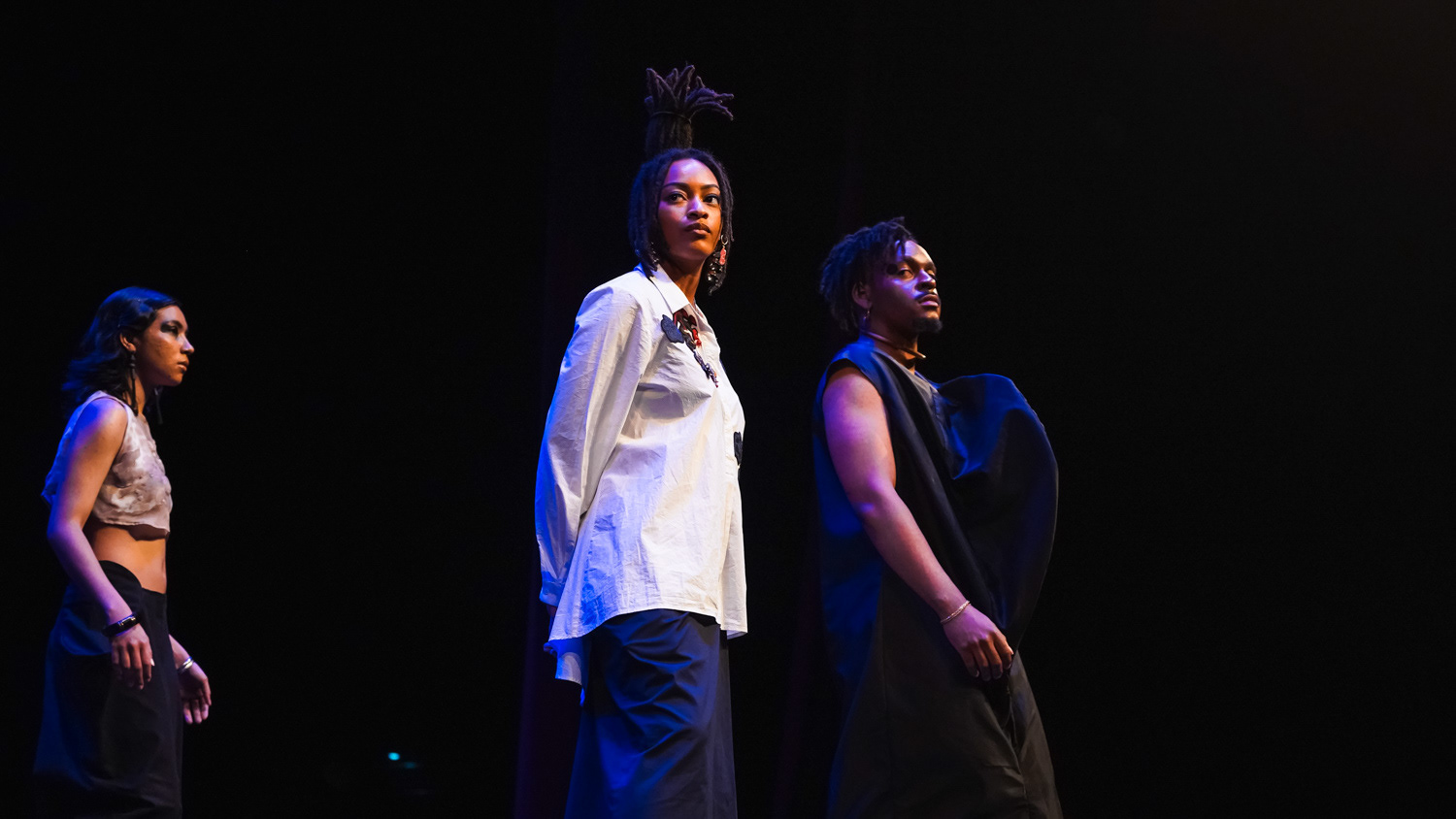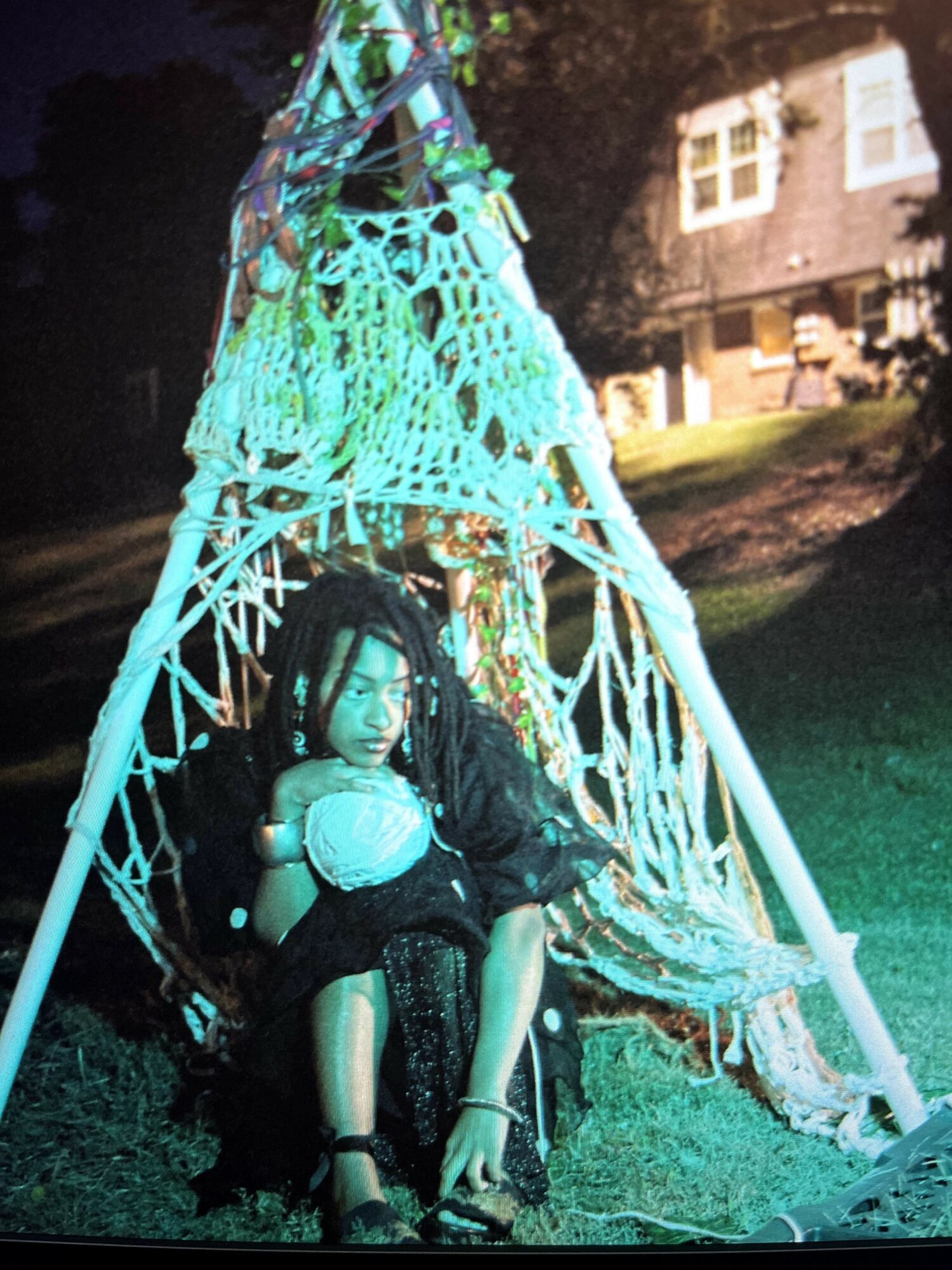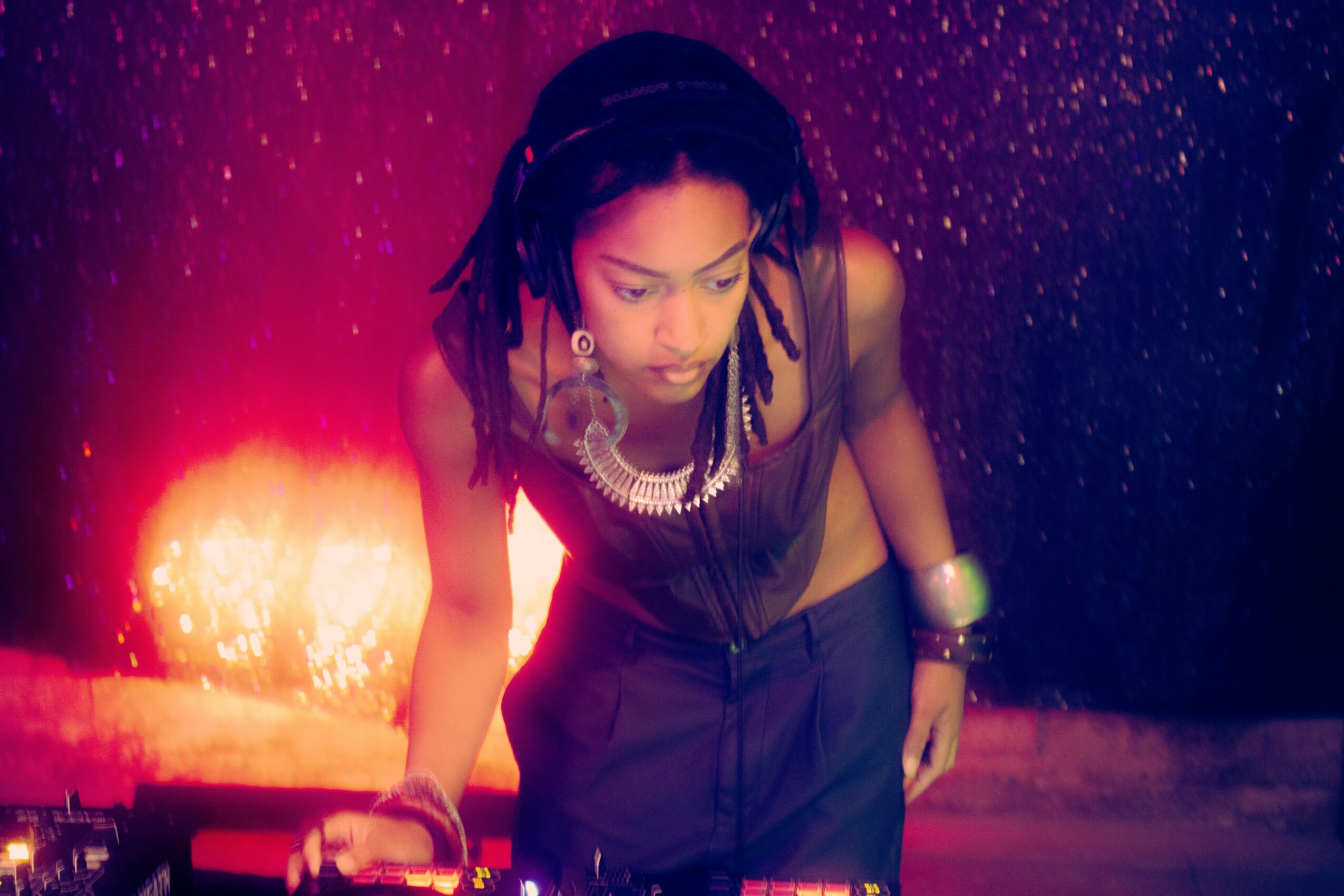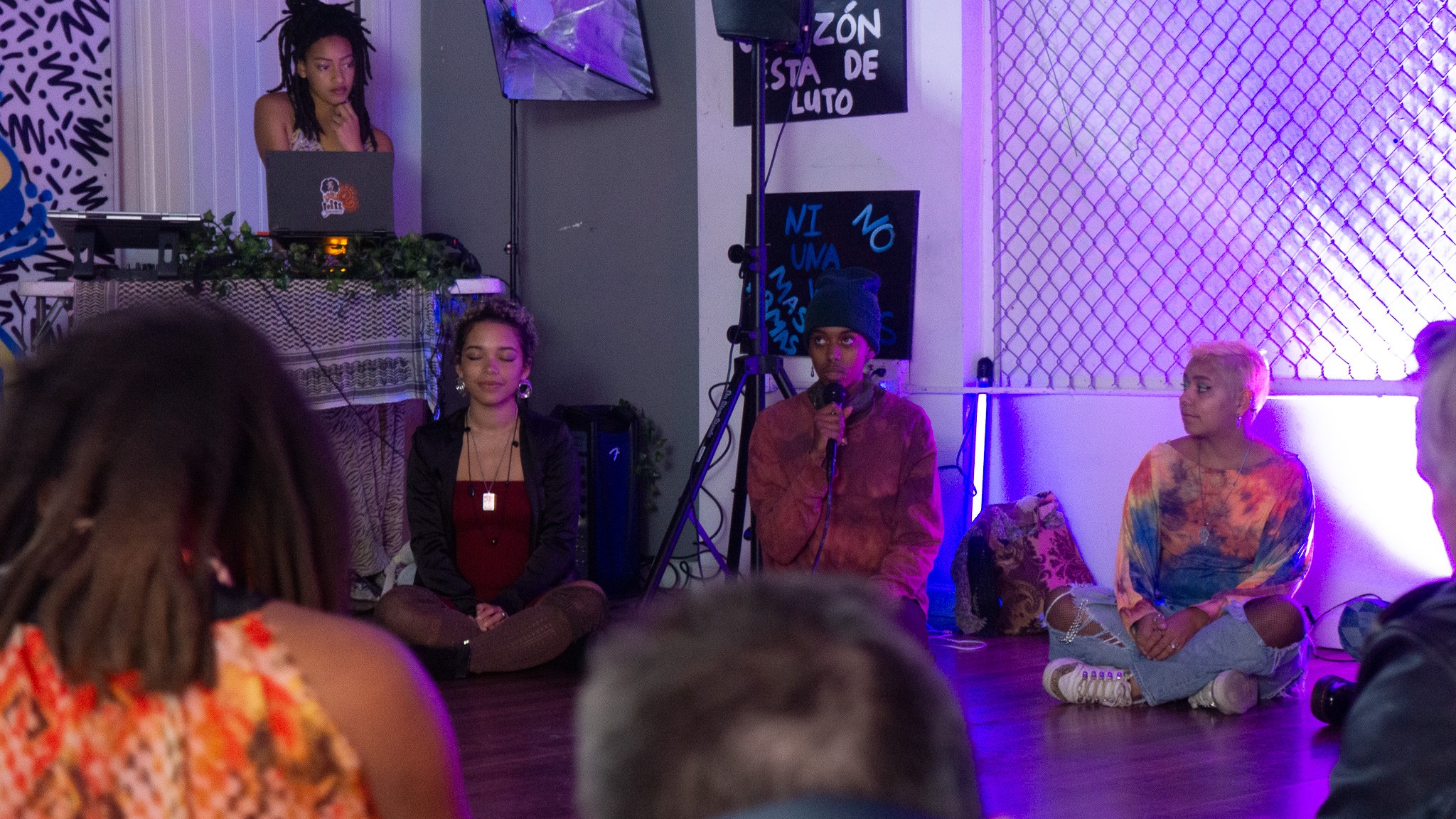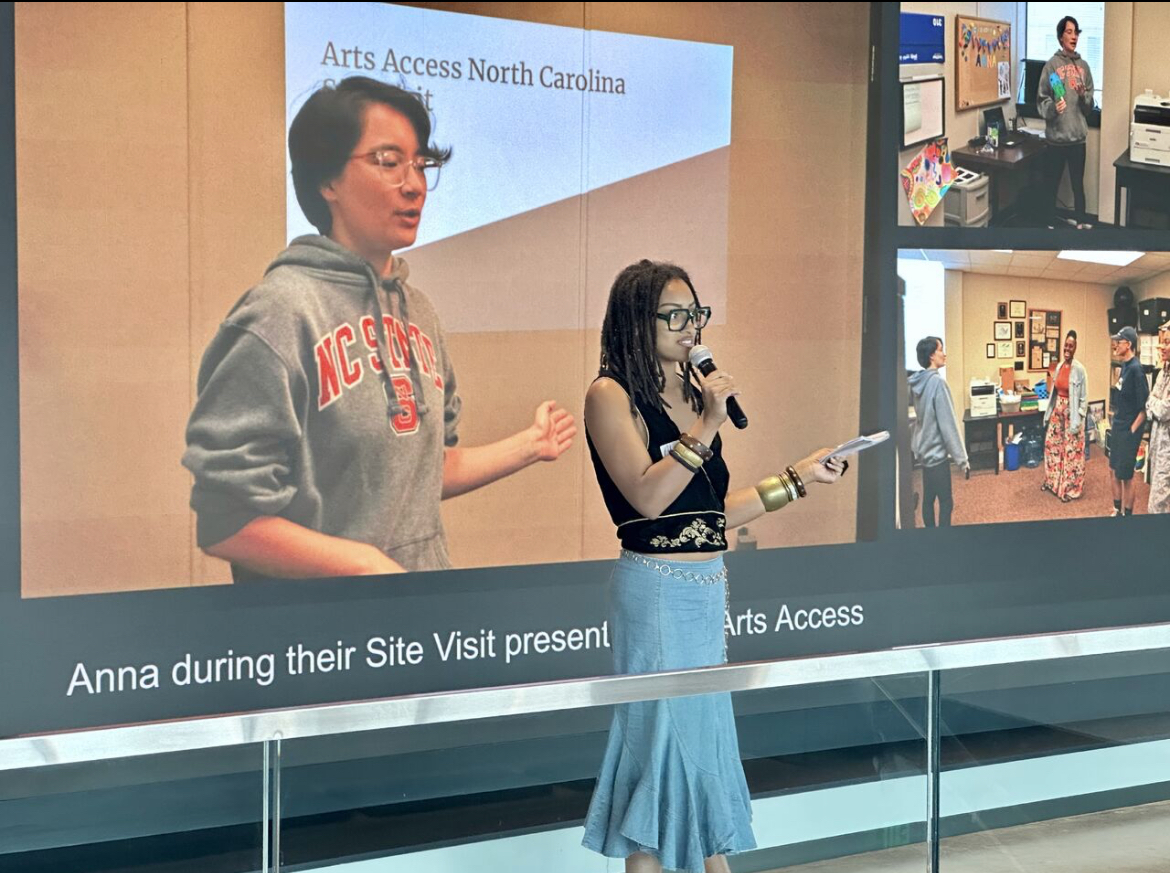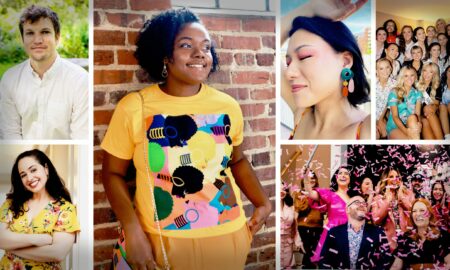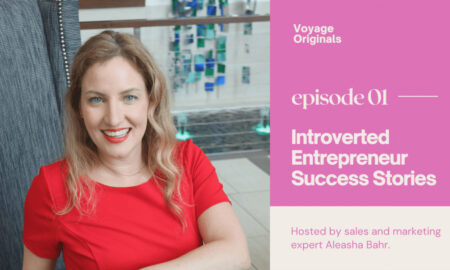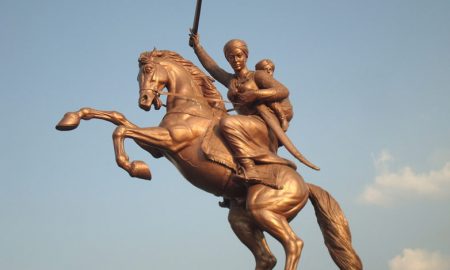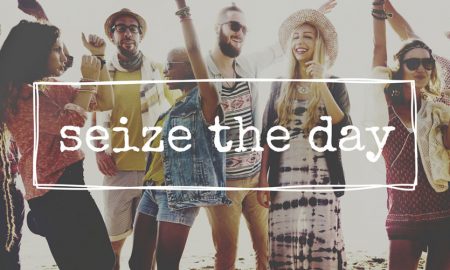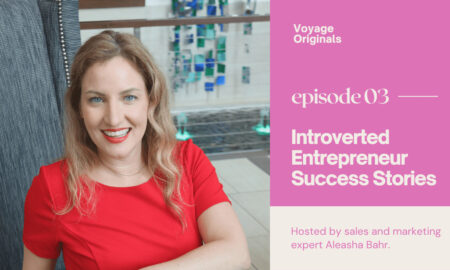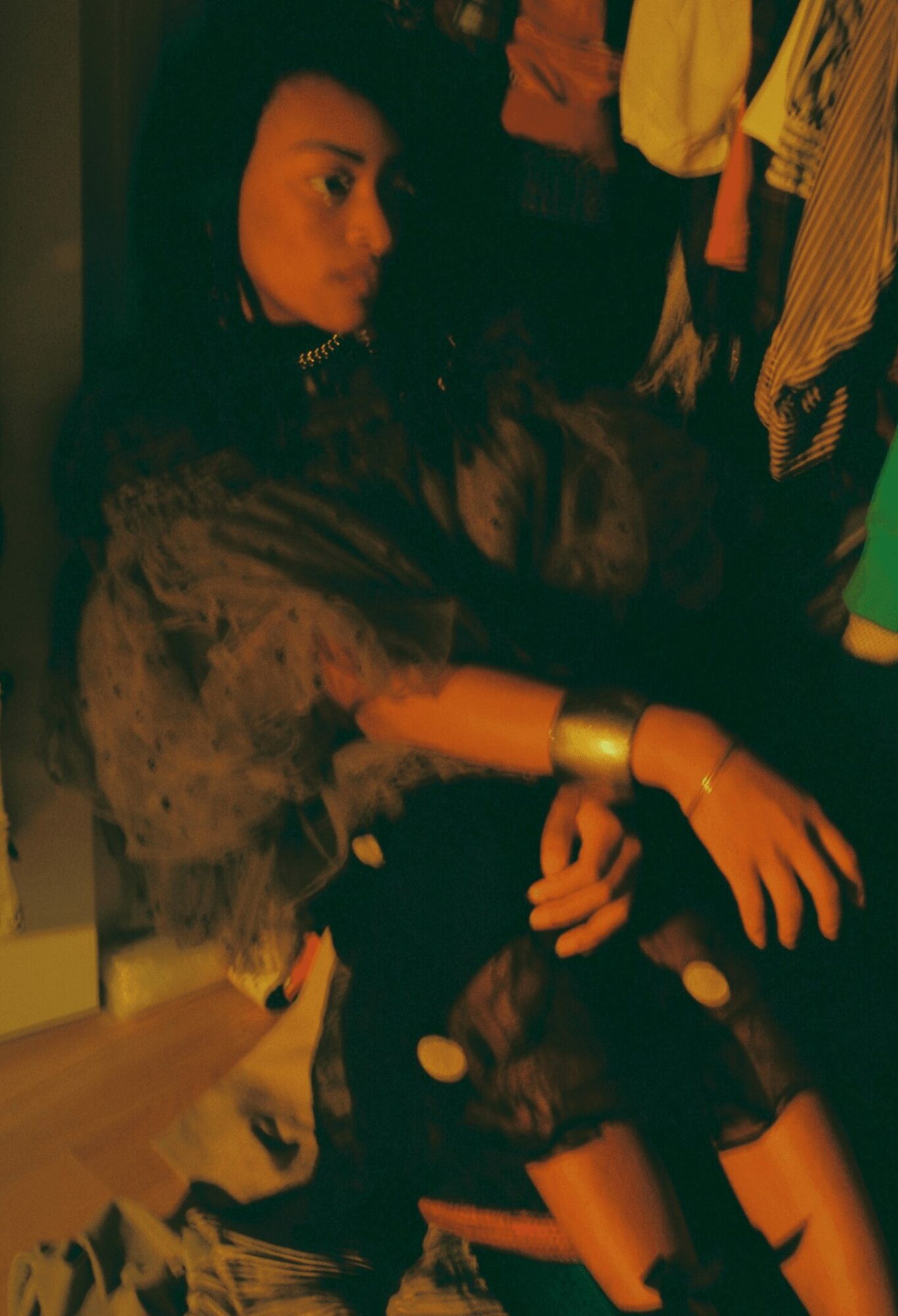

Today we’d like to introduce you to Mona Abraham.
Hi Mona, we’re thrilled to have a chance to learn your story today. So, before we get into specifics, maybe you can briefly walk us through how you got to where you are today?
I am a crafter at heart. Quite anything that allows me to manually work out spatial issues is nourishing. It’s one of the first identifiers of alignment I experienced. In that, my earliest memories are of sitting alone in my room making things and listening to music for hours.
I began teaching myself to sew while also fixing or making things around the house from scraps–cardboard sculptures and such. My dad is a fine artist and I felt inclined to explore painting and drawing as well, not that he taught me that. What he did teach me was how to observe like an artist–which is to be a person who pays attention to objects volumetrically or by examining things by their components first. Black is never black, it’s a combination of colors that appear that way optically. A portrait of a person is only made recognizable once you’ve brought their features into a proportion close enough to mimic their own, nevermind technical skill. I spent every summer at Lore Emelio Design Studio in Charlotte from the age of 12 to 18 learning various elements of fashion design and fabric studies. I then spent high school majoring in Visual Art and Apparel at Northwest School of the Arts.
Everything can be understood by being curious about how or why it came to be, leaving me a person filled with wonder. I call this possibility for transformation “magic”, something I practiced often and which was positively reinforced. This is the thought that there is always another solution, possibility, or capacity for something to exist that could not be observed–objects and humans alike! In this way, I became curious about everything, and so this exercise made me well fit to be a design thinker. I took my sewing, materials, and painting passions and added design as I majored in Art & Design: Fibers (now called MAD Tech) at NC State University. I felt validation in learning that my mode of thinking was not a secondary skill, but the primary force by which I could bring things to life.
Having both a passion for art and design forced me to ponder where I could apply these in the world as I entered university, and that question has gradually been answered since. My love for using these skills as tools to translate, visualize, and heal my global community is my current agenda.
We all face challenges, but looking back would you describe it as a relatively smooth road?
My sense of belonging to this realm has always been consistent. Figuring out how to merge it with my active life has not. It isn’t until now that I feel much more able to integrate everything, and that requires a step back from a lot of activities that divide my attention and groundedness. Growing up that was non-negotiable. However, in being sociable as an adult I’ve allowed more things to carry me away, which has now informed both the work and my personal development. Mending my relationship to this practice requires making more “room”–allotted time, dates with myself, romance even. It’s a mindfulness of the way my body reacts to things I give my attention to and discerning which things deserve to receive it.
Thanks for sharing that. So, maybe next you can tell us a bit more about your work?
Here lies my intersections. As a multidisciplinary artist, if anyone asks what I do, I always respond that my passions lie at the intersection of fine art, design, and community engagement. To be more specific—fine art painting, soft material studies, and offering the knowledge these studies reveal to my community. This is done through researching alternative methods of cultural work and creating healing spaces to address contemporary issues.
What are your plans for the future?
Currently, I am on a mission to reground before I can offer solace to anyone else—creating anything that I feel pulled to. I’ve been doing a lot more personal study, working on paintings concerning the human experience, and taking courses to further my breadth (oil painting and woodworking).
As my friend says, “Your desire is intelligent”, meaning its origin is not immaterial but rather informed by an underlying energy or destiny. For the lines that pull to have such a similar energetic origin, I intend to communicate where that lies in hopes that that clarity can speak to other’s experiences.This is a lifelong journey, and one that all these practices aim to fulfill.
Contact Info:
- Website: https://monav.myportfolio.com/
- Instagram: https://www.instagram.com/monaveeeee/
- LinkedIn: https://www.linkedin.com/in/amaya-abraham/
- Other: https://www.instagram.com/monas.ark/
